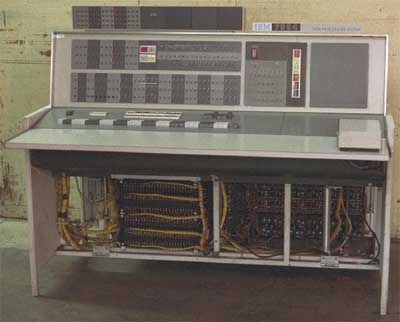INTRODUCTION
First generation:

The first generation of computers is said by some to have started in 1946 with ENIAC, the first 'computer' to use electronic valves (ie. vacuum tubes). Others would say it started in May 1949 with the introduction of EDSAC, the first stored program computer.
A first-generation programming language (1GL) is a machine-level programming language.[1]
A first generation (programming) language (1GL) is a grouping of programming languages that are machine level languages used to program first-generation computers. Originally, no translator was used to compile or assemble the first-generation language. The first-generation programming instructions were entered through the front panel switches of the computer system. This is very expensive. There was originally no compiler or assembler to process the instructions in 1GL.
The instructions in 1GL are made of binary numbers, represented by 1s and 0s. This makes the language suitable for the understanding of the machine but far more difficult to interpret and learn by the human programmer.
The main advantage of programming in 1GL is that the code can run very fast and very efficiently, precisely because the instructions are executed directly by the CPU. One of the main disadvantages of programming in a low level language is that when an error occurs, the code is not as easy to fix.
First generation languages are very much adapted to a specific computer and CPU, and code portability is therefore significantly reduced in comparison to higher level languages.
Modern day programmers still occasionally use machine level code, especially when programming lower level functions of the system, such as drivers, interfaces with firmware and hardware devices. Modern tools such as native-code compilers are used to produce machine level from a higher-level language.
The period of first generation was 1946-1959. The computers of first generation used vacuum tubes as the basic components for memory and circuitry for CPU (Central Processing Unit). These tubes, like electric bulbs, produced a lot of heat and were prone to frequent fusing of the installations, therefore, were very expensive and could be afforded only by very large organisations. In this generation mainly batch processing operating system were used. Punched cards, paper tape, and magnetic tape were used as input and output devices. The computers in this generation used machine code as programming language.
First Generation
The main features of first generation are:
Vacuum tube technology
Unreliable
Supported machine language only
Very costly
Generated lot of heat
Slow input and output devices
Huge size
Need of A.C.
Non-portable
Second Generation:
Second Generation (1956-1963) Transistors. Transistors replace vacuum tubes and ushered in the second generation of computers. The transistor was invented in 1947 but did not see widespread use in computers until the late 1950s.
The period of second generation was 1959-1965. In this generation transistors were used that were cheaper, consumed less power, more compact in size, more reliable and faster than the first generation machines made of vacuum tubes. In this generation, magnetic cores were used as primary memory and magnetic tape and magnetic disks as secondary storage devices. In this generation assembly language and high-level programming languages like FORTRAN, COBOL were used. The computers used batch processing and multiprogramming operating system.

The main features of second generation are:
- Use of transistors
- Reliable in comparison to first generation computers
- Smaller size as compared to first generation computers
- Generated less heat as compared to first generation computers
- Consumed less electricity as compared to first generation computers
- Faster than first generation computers
- Still very costly
- A.C. needed
- Supported machine and assembly languages
- third generation:
No comments:
Post a Comment